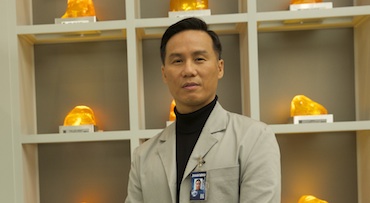
InGen Technologies
We make your future
InGen Assets Chart: The International Genetic Technologies figures above are represented in billions of dollars.
InGen is all about tomorrow's technology, today. Ever since its founder Dr. John Parker Hammond dreamed up the idea to access prehistoric life from preserved DNA in fossilized amber, InGen's headquarters in San Diego, CA have been busy at work collecting the world's most comprehensive genomic library. Their work paved the way for the first prehistoric animal to be brought back to life in 1986 and since then have learned valuable lessons about control and environmental issues which have helped shape the company into what it is today.
The acquisition of InGen by Masrani in 1998 hasn't changed the scientific focus placed on the company, and CEO Simon Masrani has looked to experienced geneticist Dr. Henry Wu to guide the company ever since - with results often exceeding expectations for investors. Thanks to Masrani, InGen has been reinvented and is bringing tomorrow's science, today.

Lead Genetic Biologist: Dr. Henry Wu, of InGen, stands behind a collection of amber samples collected from various InGen operated mines located all across the world.
After the unfortunate incident at Jurassic Park, Dr. Henry Wu returned to Isla Nublar in November of 1994 to assist the clean up teams in cataloging specimen numbers, and to identify exactly how the animals were breeding. Despite the island’s presence of seemingly same sex animals, it was the inclusion of amphibian DNA which he himself had underestimated. Dr. Wu noted that the inclusion of DNA sequences from several species of amphibians including the Common Reed Frog (Hyperolius viridiflavus) adapted extremely well to the cloned DNA of the dinosauria - eventually enabling the animals to change their sex through a chemical trigger which disintegrated the female organs to create male sex organs.
This event intrigued Dr. Wu and inspired him to write the book ‘The Next Step: An Evolution of God’s Concepts’ in 1995. Within its pages he included a theory claiming that, with the right tools and research, he could bring brand new species into fruition by the combination of various species. “Much like selective breeding within domestic animals,” he writes, “but with this, we would be combining several species into one new animal. Today's technological limitation means we are decades away from achieving this, maybe even fifty years away, but who knows, hopefully in my life time we could see it become a reality.”
By May of 1997 Dr. Wu and his research team at a financially struggling InGen had successfully combined several species of plant life together giving birth to the Karacosis wutansis (or Wu Flower) which gained world-wide media attention, including the attention of Simon Masrani - who incidentally acquired InGen the following year. The son of a close friend of the now late John Hammond, Simon Masrani promoted Dr. Wu within the ranks of the InGen company in December of 2000 and brought the scientist onto the Jurassic World project. Dr. Henry Wu was instantly looked at as a valued member of the Masrani company, proving his unique skill not only as a successful scientist, but a great visionary.